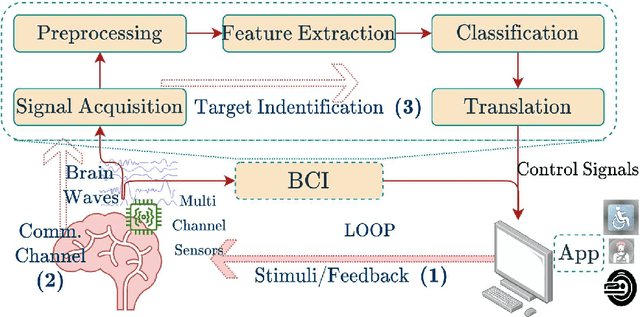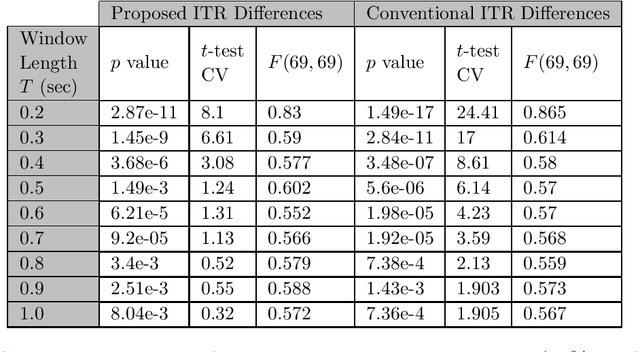Information Transfer Rate in BCIs: Towards Tightly Integrated Symbiosis
Paper and Code
Jan 03, 2023



Information Transfer Rate (ITR) is a widely used information measurement metric, particularly popularized for SSVEP-based Brain-Computer (BCI) interfaces. By combining speed and accuracy into a single-valued parameter, this metric aids in the evaluation and comparison of various target identification algorithms across different BCI communities. To accurately depict performance and inspire an end-to-end design for futuristic BCI designs, a more thorough examination and definition of ITR is therefore required. We model the symbiotic communication medium, hosted by the retinogeniculate visual pathway, as a discrete memoryless channel and use the modified capacity expressions to redefine the ITR. We use graph theory to characterize the relationship between the asymmetry of the transition statistics and the ITR gain with the new definition, leading to potential bounds on data rate performance. On two well-known SSVEP datasets, we compared two cutting-edge target identification methods. Results indicate that the induced DM channel asymmetry has a greater impact on the actual perceived ITR than the change in input distribution. Moreover, it is demonstrated that the ITR gain under the new definition is inversely correlated with the asymmetry in the channel transition statistics. Individual input customizations are further shown to yield perceived ITR performance improvements. An algorithm is proposed to find the capacity of binary classification and further discussions are given to extend such results to ensemble techniques.We anticipate that the results of our study will contribute to the characterization of the highly dynamic BCI channel capacities, performance thresholds, and improved BCI stimulus designs for a tighter symbiosis between the human brain and computer systems while enhancing the efficiency of the underlying communication resources.
 Add to Chrome
Add to Chrome Add to Firefox
Add to Firefox Add to Edge
Add to Edge